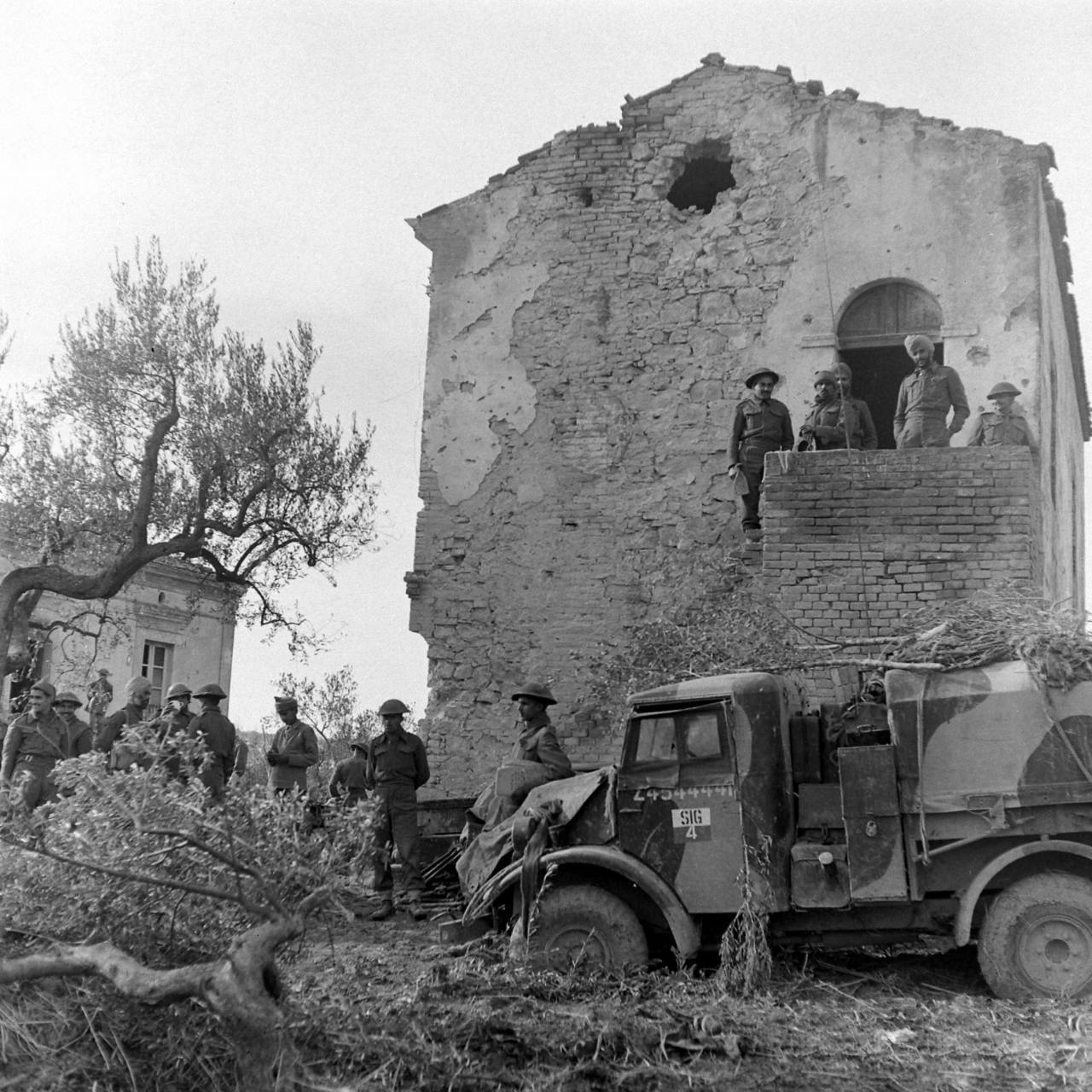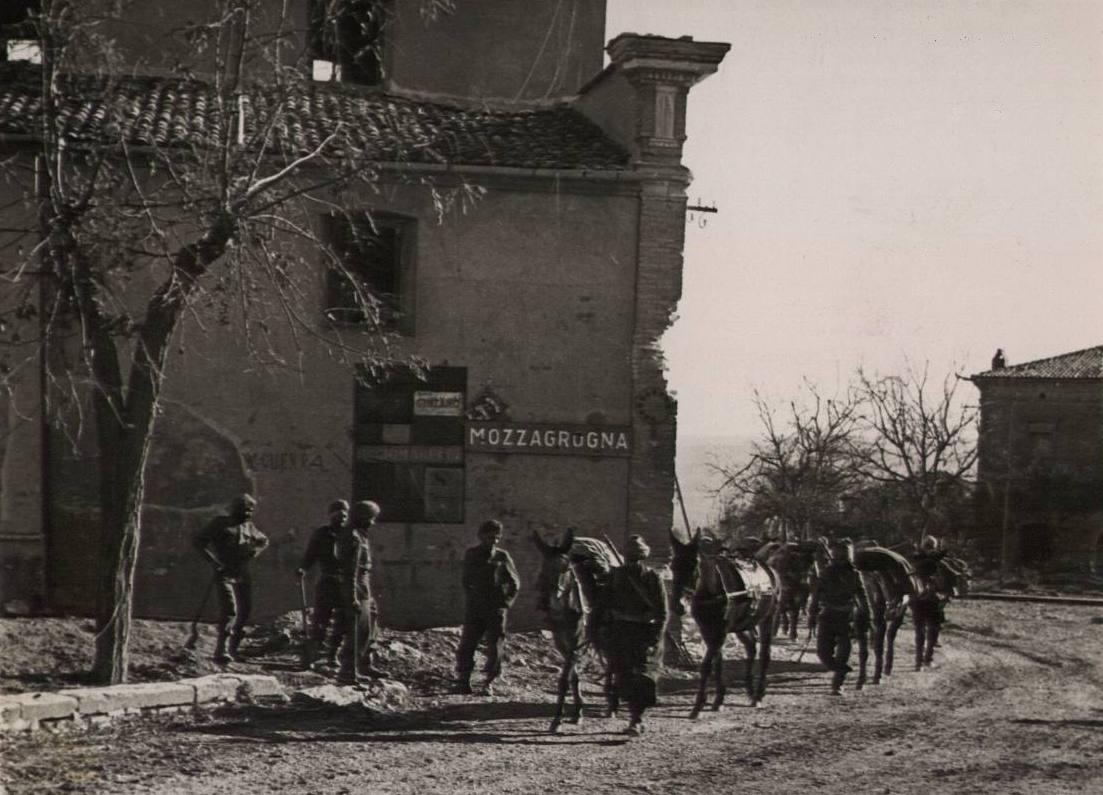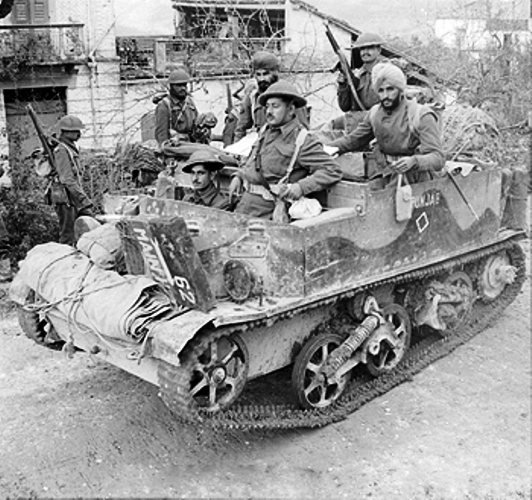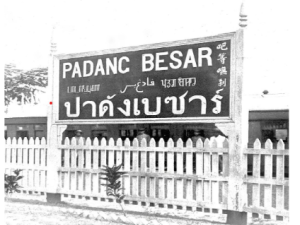"As one man they rose with their war cry of "Bole Sohe Nihal , Sat Sri Akal!" and leapt to meet their assailants. It was bayonet to bayonet, and the German paratroopers were outmatched. They broke and ran. The Sikhs swept forward to seize the enemy positions, capturing a number of prisoners, including a German officer with two bayonet wounds."
The story of Italian Campaign is a saga of valour and endurance shared by all. It is unfortunate that the major contribution of the Sikh Military Divisions has been given such short shrift in the annals of war.

8th Indian army Division regiment in Forli
The Eighth Army was a British & Commonwealth Force, formed in North Africa during 1942, where it fought and defeated the Afrika Korps. After the campaign in North Africa, the Eighth Army became heavily committed in the invasions of Sicily and Italy. Units were also withdrawn to take part in the D-Day invasion and campaigns throughout Northern Europe. On 24 September 1943 the Division landed in Taranto
Taranto-Environment: In 1991 Taranto was declared a high environmental risk area by the Ministry of Environment. As a consequence of the poisons discharged into the air by the factories on its territory, Taranto is the most polluted city in Italy and western Europe...(Italy), to take its part in the Italian Campaign Italian Campaign (World War II) The Italian Campaign of World War II was the name of Allied operations in and around Italy, from 1943 to the end of the war in Europe and for 19 months was almost continuously in action advancing through mountainous country, crossing river after river. The formation later adopted the motto "One more river”.

A Sikh regiment in Mozzagrogna Italy
The Order of Battle of the Indian Army included the 4th, 8th and 10th Indian Army Divisions. These divisions were part of the legendary 8th British Army and fought along with British, New Zealand, Polish, American, Canadian and French Divisions. Together these men, soldiers from distant lands, men with little or no cultural similarities, lived together and many of them even died together.
From September 1943 to April 1945, approximately 50,000 soldiers of the Indian Army took part in the Italian Campaign. They came from all of India's major faiths, Hindu, Muslim, and Sikh. All of them sacrificed their lives, fighting in a continent and for a country that wasn't their own. Some of these soldiers were only 16 years old. Most of them were less than 20 years old and were too young to see things that men of their age were never meant to see blood, brutality and death. These young men fought for a cause that was not their own. Their cause was India’s freedom. Yet, they adopted the cause of liberty in Italy as theirs. And they fought ferociously for it. The most evident sign of Indian presence in Italy is represented by the War Cemeteries and cremation memorial.
The story of Indian Army in Italy during the Second World War brings out the courage, mettle, the human face and the sacrifices made by officers and men. But this glory came at a cost. Indian casualties in this campaign were twenty three thousand seven hundred and twenty two (23,722). 5,782 Indian Soldiers gave the supreme sacrifice of their lives on the soil of Italy. This privilege should be extended to the Sikh soldiers, who throughout the history of the Italy have spilled their blood unflinchingly to protect civil liberties.
The Sikh Soldier since times immemorial has been in the fore-front of all wars to fight against the forces of evil. During the Second World War, the Sikhs in Italy played a predominant role in the battles fought, what is collectively known in military history as the Italian Campaign.

Members of Punjab Regiment on a bren gun carrier in Florence Italy
More than half of the country saw the Sikhs fighting against the Germans right from the first assault on the Gothic Line in August 1944, to the last assault on the Senio River in April 1945. The Sikh divisions had played an important part in the heavy fighting, in appalling weather, between then and the end of the year, suffering considerable casualties. These Sikh Divisions were in the thick of action on many fronts, including in Monte Cassino, the Battle for Sangro River and Liri Valleys, the advance along the East coast to Bologna, the crossing of Senio River and in the battle for the Gothic lines. They met and defeated German troops from Parachute and Panzer Regiments. These Divisions helped liberate the cities of Perugia, Luca, Florence, San Marino, Cesena, Forli, Ferrara and Bologna.
In an incident near Monte Pavone, one and a half companies of German paratroopers stood at bay on the crest of the peak of Monte Pavone. The paratroopers, who were dug in on the reverse slopes, destroyed themselves through over-confidence. Perceiving the Indians to be comparatively few in numbers, they sprang to their feet and charged up the hillside. The Sikhs for an instant were astounded by such foolhardiness; as one man they rose with their war cry of "Bole Sohe Nihal ,Sat Sri Akal!" and leapt to meet their assailants. It was bayonet to bayonet, and the paratroopers were outmatched. They broke and ran. The Sikhs swept forward to seize the enemy positions, capturing a number of prisoners, including a German officer with two bayonet wounds.
| sikh monte nano | Sikhs Captured Florence |
On approaching Alpe di Poti the grain of the ground worsened. Higher crests, vertical-sided gorges and heavily wooded trackless valley taxed the supply services to the utmost. No carriers save men and mules could negotiate such terrain. Concerning the hard-working and indomitable mule transport companies, an observer wrote:
"Mules were in great demand in these hills. They performed wonders and earned the undying gratitude of the fighting troops whom they served. Daily they carried food, water and ammunition along paths exposed to incessant shell and mortar fire. One Sikh mule unit attached to a British battalion established a proud record. No mule was ever left unattended or allowed to break away from a supply column under fire. The Sikhs' tendency to treat their mules like potential Derby winners led one officer to estimate casualties to be higher among the drivers than among the mules. When fire was directed on them the Sikhs would bring their animals' heads together and would stand in front of them. One Sikh muleteer sheltered his mules in the corner of two walls while eighteen shells exploded around him."
At 0300 hours on the morning of November 23rd 3/8 Punjabis advanced to force the Sangro in a silent attack, and to seize a high, wooded knoll on the north bank of the river.
In the darkness, "C" Company under Captain Gardhari Singh, led the way, wading through turbulent floods up to the men's chests. Wet and shivering, the Punjabis emerged and began to clamber towards their objective. Other companies of the battalion followed in close support. One hundred yards short of the crest the alarm was given, and enemy machine-guns and tanks opened fire. Alert New Zealand gunners instantly pinpointed the flashes from the tank guns, and sent the panzers scurrying with salvoes of well-placed shells. The leading Punjabi sections, undeterred by the traversing spandaus, stalked the machine-gun posts and destroyed them. The crest was won.
The fact that the war correspondent of the Illustrated London News has categorically stated that at the end of the Italian Campaign on VE Day 1945, 8th Indian Division was perhaps the best fighting formation in Italy.
“Quando tornate a casa
Roccontate loro di noi e dite loro
Che per il loro futuro
Abbiamo Sacrificiato il nostro presente.”In Italian, it means :
‘When you go home,
tell them of us,
and say for your tomorrow,
we gave our today’.
Let us spare a thought, on the above historical inscription which is from the famous Kohima War Memorial.
Reference:- The Tiger Triumphs.






